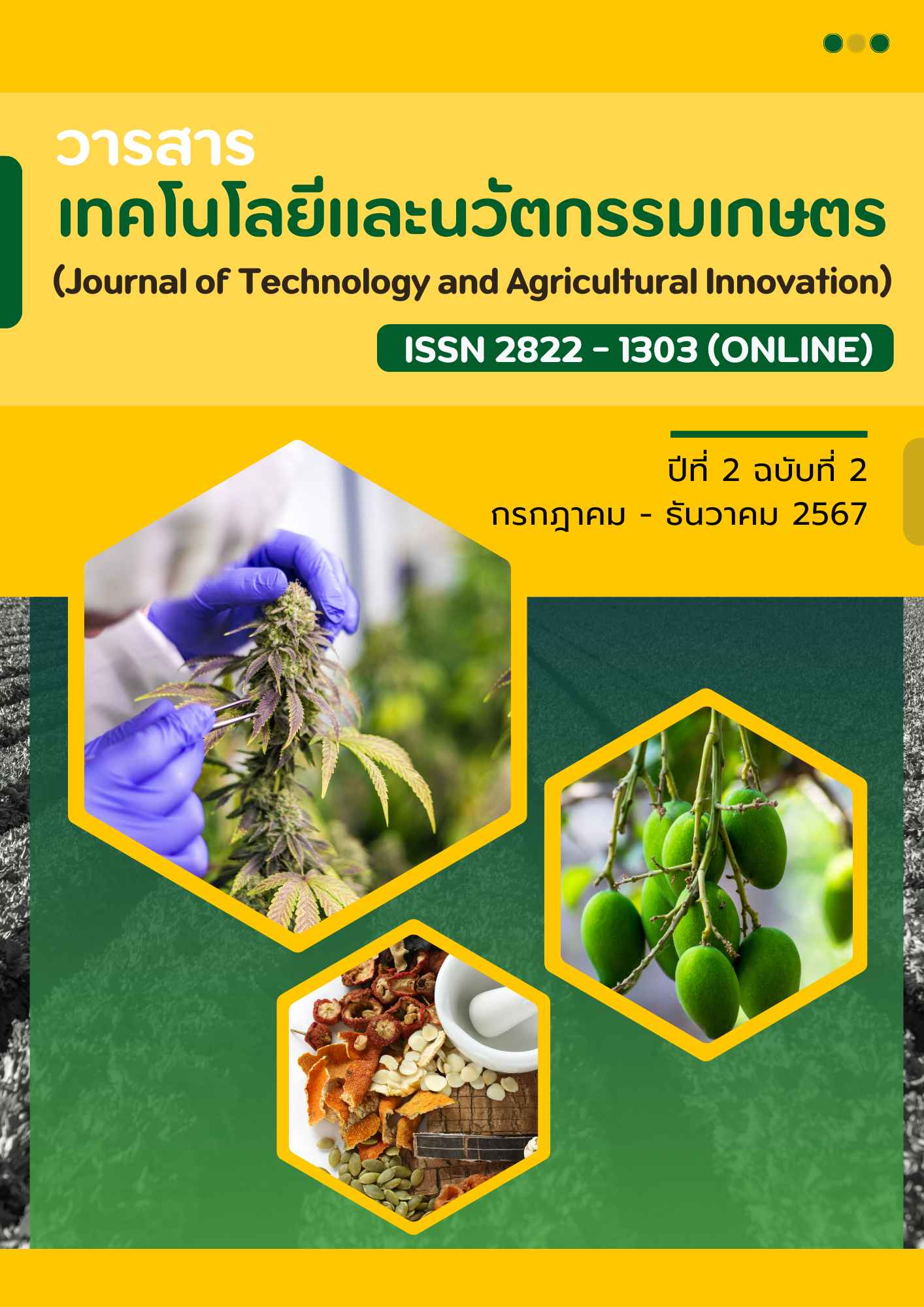The Survey Local Herbal Plants in the Upper Southern, Thailand for the Medicinal Utilization
DOI:
https://doi.org/10.55164/jtai.v2i2.170Keywords:
Wisdom, Active ingredient, Herb, GenotypeAbstract
The survey of local herbal plants for medicinal use in the Upper Southern Thailand. It was founded in the year 2020-2021. The first goal was to gather information about the species, medicinal properties, usage guidelines, and limitations of local herbal plants. The 120 interviewers gathered the data for this study from producers, consumers, and suppliers. Another objective was to determine the active constituents and some species nucleotide sequences. The findings showed that there were 40 varieties for internal cure, 1 variety for external cure and 11 varieties of both. Eleven different types of components, including total triterpenoids. (Schefflera leucantha R. Vig.), total flavonoids (Flemingia stricta Roxb. Ex W.T), total phenolics (Eleutherine americana Merr.) andrographolide (Andorgraphis paniculate (Burm.f) Wall ex Nees), total curcuminoid (Curcuma longa L), β-sitosterol (Excoecaria cochinchinensis Lour), myristicin (Myristica fragrans Houtt), terpinene-4-ol (Kaempferia galanga L.) total glucan, β-glucan and α-glucan (Schizophyllum commune). It was found that ITS and rpoC1 gene primers could be detected using base pair size as 500-700 base pairs and 500 base pairs, respectively. Furthermore, the top three limitations on production and utilization were rare ingredients (39.17%), contamination (34.17%) and negative effects (32.00%) while the suggestion was increasing public knowledge through information channels (52.50%) and market channels (40.83%). This study will be an option to preserving health and encouraging the community’s and the youth’s use of local herbal plants for conservation.
References
Cheng, T., C. Xu, L. Lei, C. Li, Y. Zhang and S. Zhou. (2016). Barcoding the kingdom Plantae: new PCR primers for ITS regions of plants with improved universality and specificity. Molecular Ecology Resources. 16(1), 138-149.
Hu, S.J., H.H. Yu, G. Han, L. Xia and C.S. Lin. (2019). DNA barcoding and rapid identification of the precious herb Herba Anoectochili. Chinese Journal of Natural Medicines. (10), 738-745.
กรมพัฒนาการแพทย์แผนไทยและการแพทย์ทางเลือก. (2559). แผนแม่บทแห่งชาติว่าด้วยการพัฒนาสมุนไพร ฉบับที่ 1 พ.ศ. 2560-2564. กรุงเทพฯ. : บจก. ทีเอส อินเตอร์พริ้นท์.
สำนักส่งเสริมและจัดการสินค้าเกษตร. (2557). สถานการณ์การผลิตและการตลาดพืชสมุนไพร. กรุงเทพฯ. กรมส่งเสริมการเกษตร กระทรวงเกษตรและสหกรณ์.
อรุโณทัย ซาววา สุภาวดี ง้อเหรียญ อัญชลี ศรีสุวรรณ ประพิศ วองเทียม และหทัยรัตน์ อุไรรงค์. (2552). การศึกษาความหลากหลายของพันธุ์มันสำปะหลังในประเทศไทยโดยใช้เทคนิค SCAR (Sequence Characterized Amplified Region). ใน รายงานผลงานวิจัยประจำปี 2551-2552. (น.96-118). สำนักวิจัยพัฒนาเทคโนโลยีชีวภาพ กรมวิชาการเกษตร.
Downloads
Published
How to Cite
Issue
Section
License
Copyright (c) 2024 Thaksin University

This work is licensed under a Creative Commons Attribution-NonCommercial-NoDerivatives 4.0 International License.


